The All-Star Game might be the crown jewel of All-Star Week -- it's in the name, after all -- but for my money, the most exciting game played that week is the Futures Game. Getting a sneak peek at many of baseball's next stars in a format such as this is always tantalizing, and for many fans who don't attend a lot of minor league games or watch a lot of streams, this might be the first glimpse at some of these players.
The future comes more quickly than you think for many. Looking at 2017's Future Game participants, you see a surprisingly long list of players who aren't just up getting cups of coffee but are regular contributing players, including Rhys Hoskins, Jack Flaherty, Ronald Acuna Jr., Rafael Devers and Yoan Moncada. And many more ought to be doing so quite soon -- hi, Vladimir Guerrero Jr.!
Running through this year's Futures Game roster, it's fun to project which players will be this year's group who will excel in the near future. But we'll also give you some concrete predictions before you accuse me of chickening out!
 SS Fernando Tatis Jr., San Diego Padres: The ZiPS projection system didn't see Tatis as quite ready for the majors going in 2018, which was hardly a shock given that he had played only 14 games above the low-A Midwest League. His preseason projection of. 208/.279/.369 wasn't anywhere close to major league ready, but with his success in Double-A, the date of his MLB-readiness is coming upon us.
SS Fernando Tatis Jr., San Diego Padres: The ZiPS projection system didn't see Tatis as quite ready for the majors going in 2018, which was hardly a shock given that he had played only 14 games above the low-A Midwest League. His preseason projection of. 208/.279/.369 wasn't anywhere close to major league ready, but with his success in Double-A, the date of his MLB-readiness is coming upon us.
Coming into this season, Tatis' projection for 2019 was .215/.290/.409, in itself somewhere around league average, even if light on batting average. But now his triple-slash line at Double-A stands at an impressive .291/.362/.518, which would be good for a 21- or 22-year-old shortstop. For a 19-year-old, the fifth-youngest player to play in the Texas League this year and the youngest to play more than a few games, that's phenomenal.
ZiPS now projects him to be a .230/.310/.422 hitter in the majors in 2019, already a real contributor and someone with chances of nearing All-Star worthiness as soon as 2020. ZiPS sees 30-homer seasons as a regular feature of his career.
All-Star Game ETA: 2021
 2B Luis Urias, San Diego Padres: As much as ZiPS liked Tatis coming into the season, it liked Urias to be a major league contributor even sooner, already nearly pegging him as a league-average second baseman in 2018. While the projections don't say that Urias will ever hit for much power, they do foresee Urias becoming a .350-.360 OBP player and a great fit at the top of the lineup. The projection ceiling isn't as high for Urias as it is for Tatis, but ZiPS sees Urias being already better than league average in 2019 and an above-average player for the better part of a decade.
2B Luis Urias, San Diego Padres: As much as ZiPS liked Tatis coming into the season, it liked Urias to be a major league contributor even sooner, already nearly pegging him as a league-average second baseman in 2018. While the projections don't say that Urias will ever hit for much power, they do foresee Urias becoming a .350-.360 OBP player and a great fit at the top of the lineup. The projection ceiling isn't as high for Urias as it is for Tatis, but ZiPS sees Urias being already better than league average in 2019 and an above-average player for the better part of a decade.
All-Star ETA: 2022
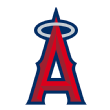 OF Jo Adell, Los Angeles Angels: The next Mike Trout? That would seem a bit on the cheeky side, given that Trout already has the peak of an inner-circle Hall of Famer, but Adell's 2018 is rapidly pushing him to phenom status. The ZiPS for Adell put his projections right now around the .700 OPS mark, something nearly unheard of for a player who has only a couple months of high-A ball under his belt. We'll know more when he reaches Double-A -- in the potential high-upside scenarios, he could blow through this level very quickly -- but ZiPS is becoming rapidly convinced that he'll be a young Matt Kemp or Adam Jones and should be starting for the Angels in 2020.
OF Jo Adell, Los Angeles Angels: The next Mike Trout? That would seem a bit on the cheeky side, given that Trout already has the peak of an inner-circle Hall of Famer, but Adell's 2018 is rapidly pushing him to phenom status. The ZiPS for Adell put his projections right now around the .700 OPS mark, something nearly unheard of for a player who has only a couple months of high-A ball under his belt. We'll know more when he reaches Double-A -- in the potential high-upside scenarios, he could blow through this level very quickly -- but ZiPS is becoming rapidly convinced that he'll be a young Matt Kemp or Adam Jones and should be starting for the Angels in 2020.
All-Star ETA: 2021
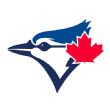 SS Bo Bichette, Toronto Blue Jays: Bichette isn't terrorizing the minors in 2018 the way his fellow prospect Vlad Jr. is, but he remains on the trajectory predicted for him going into the season, with a .260/.313/.460 line for 2019. My very rough translations for minor league defense keep him well below average but better than prime Hanley Ramirez territory at least. Assuming he stays at short, ZiPS projects some awkward Troy Tulowitzki conversations for the Blue Jays in 2020 -- the last guaranteed season of Tulo's contract -- making the giant assumption that Tulo can stay even slightly healthy.
SS Bo Bichette, Toronto Blue Jays: Bichette isn't terrorizing the minors in 2018 the way his fellow prospect Vlad Jr. is, but he remains on the trajectory predicted for him going into the season, with a .260/.313/.460 line for 2019. My very rough translations for minor league defense keep him well below average but better than prime Hanley Ramirez territory at least. Assuming he stays at short, ZiPS projects some awkward Troy Tulowitzki conversations for the Blue Jays in 2020 -- the last guaranteed season of Tulo's contract -- making the giant assumption that Tulo can stay even slightly healthy.
All-Star ETA: 2023
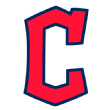 C? Francisco Mejia, Cleveland Indians: As a catcher, ZiPS sees Mejia approaching league average in 2019, hitting .262/.310/.435 for the Indians. But there's a complication: The Indians like the defense of Yan Gomes and Roberto Perez better, and Mejia's stints at third base and in the outfield have been less than successful.
C? Francisco Mejia, Cleveland Indians: As a catcher, ZiPS sees Mejia approaching league average in 2019, hitting .262/.310/.435 for the Indians. But there's a complication: The Indians like the defense of Yan Gomes and Roberto Perez better, and Mejia's stints at third base and in the outfield have been less than successful.
If Mejia ends up a successful catcher, it might be in a different uniform. In the outfield, ZiPS is less sanguine about his chances, projecting Mejia to hit only league average in his prime. There's a bit of Miguel Montero Syndrome here, in which his minor league performances become a lot less exciting if you don't consider him a catcher, even given the boost that young players frequently see from moving out from behind the plate.
All-Star ETA: 2023 (as a catcher)
 INF Brendan Rodgers, Colorado Rockies: ZiPS doesn't think he'll be an OBP high achiever, seeing him as a .290/.331/.485 hitter in 2019 somewhere in the Rockies' middle infield. DJ LeMahieu is unsigned beyond this season, and the Rockies have been smart about keeping their options open with Rodgers, playing him at second, short and third. That's enough projected power to make him league average in 2019 even after factoring in the Coors Field effect.
INF Brendan Rodgers, Colorado Rockies: ZiPS doesn't think he'll be an OBP high achiever, seeing him as a .290/.331/.485 hitter in 2019 somewhere in the Rockies' middle infield. DJ LeMahieu is unsigned beyond this season, and the Rockies have been smart about keeping their options open with Rodgers, playing him at second, short and third. That's enough projected power to make him league average in 2019 even after factoring in the Coors Field effect.
All-Star ETA: 2023
 RHP Mitch Keller, Pittsburgh Pirates: ZiPS already saw Keller as nearly a league-average starter in 2018, projecting him aggressively for a 4.45 ERA and 91 ERA+ (starters tend to average around 96). The strikeouts are down a bit, but PNC is a safer park for a young pitcher. However, Keller might not get the chance to show that he can be league average until late 2019; the quality of the Pirates' rotation isn't among the highest, but as far as depth, it is quite wide.
RHP Mitch Keller, Pittsburgh Pirates: ZiPS already saw Keller as nearly a league-average starter in 2018, projecting him aggressively for a 4.45 ERA and 91 ERA+ (starters tend to average around 96). The strikeouts are down a bit, but PNC is a safer park for a young pitcher. However, Keller might not get the chance to show that he can be league average until late 2019; the quality of the Pirates' rotation isn't among the highest, but as far as depth, it is quite wide.
All-Star ETA: 2023
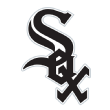 RHP Dylan Cease, Chicago White Sox: Cease isn't a phenom or anything, but he's advancing through the minors quickly, and the White Sox haven't been overly fortunate with their starting pitching, which likely leaves him an opening if he blows through Triple-A quickly. ZiPS doesn't make him out to be a league-average starting pitcher until 2021, but that is surprisingly optimistic given that his control is just good enough for him to succeed. The computer doesn't give him the same bifurcated boom-or-bust projections it has for fellow ChiSox prospect Michael Kopech.
RHP Dylan Cease, Chicago White Sox: Cease isn't a phenom or anything, but he's advancing through the minors quickly, and the White Sox haven't been overly fortunate with their starting pitching, which likely leaves him an opening if he blows through Triple-A quickly. ZiPS doesn't make him out to be a league-average starting pitcher until 2021, but that is surprisingly optimistic given that his control is just good enough for him to succeed. The computer doesn't give him the same bifurcated boom-or-bust projections it has for fellow ChiSox prospect Michael Kopech.
All-Star ETA: 2023
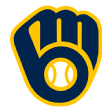 Hitting machine Keston Hiura, Milwaukee Brewers: ZiPS is pretty sure that Hiura will hit in the majors, seeing him peak in the .800-plus OPS range. The question remains as to his position, and his succeeding at second base would be ideal, both for his value and the fact that the middle infield is a Brewers weakness. If he ends up in left field, ZiPS thinks his power will take a few years to develop, and it won't be until 2021 that he's a real plus.
Hitting machine Keston Hiura, Milwaukee Brewers: ZiPS is pretty sure that Hiura will hit in the majors, seeing him peak in the .800-plus OPS range. The question remains as to his position, and his succeeding at second base would be ideal, both for his value and the fact that the middle infield is a Brewers weakness. If he ends up in left field, ZiPS thinks his power will take a few years to develop, and it won't be until 2021 that he's a real plus.
All-Star ETA: 2022
 RHP Enyel De Los Santos, Philadelphia Phillies: I already felt he'd done enough in Triple-A this season to earn at least a bullpen spot the rest of the way and be an asset to the Phillies. The Phillies have done him one better, already giving him his MLB debut by the time you read this, as he took Tuesday night's start against the Mets. De Los Santos might be a 2018 Futures Game player who is a real contributor in the majors in 2018.
RHP Enyel De Los Santos, Philadelphia Phillies: I already felt he'd done enough in Triple-A this season to earn at least a bullpen spot the rest of the way and be an asset to the Phillies. The Phillies have done him one better, already giving him his MLB debut by the time you read this, as he took Tuesday night's start against the Mets. De Los Santos might be a 2018 Futures Game player who is a real contributor in the majors in 2018.
All-Star ETA: 2023
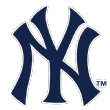 LHP Justus Sheffield, New York Yankees: ZiPS was always more suspicious of Sheffield than scouts were, an argument that the computer has lost, I feel. Luckily, projection systems don't have egos, so the adjustments to the new reality with new data tend to be painless. ZiPS still isn't completely sold -- I'm more optimistic than the computer -- but it now believes he'll be a league-average pitcher by 2021, so long as he can continue to keep the ball in the park. One fewer walk per game would be nice too, but I don't want to be greedy.
LHP Justus Sheffield, New York Yankees: ZiPS was always more suspicious of Sheffield than scouts were, an argument that the computer has lost, I feel. Luckily, projection systems don't have egos, so the adjustments to the new reality with new data tend to be painless. ZiPS still isn't completely sold -- I'm more optimistic than the computer -- but it now believes he'll be a league-average pitcher by 2021, so long as he can continue to keep the ball in the park. One fewer walk per game would be nice too, but I don't want to be greedy.
All-Star ETA: 2024
 1B Peter Alonso, New York Mets: Dominic Smith picked a poor season for his power to disappear, with Alonso coming up quickly behind him. ZiPS' projecting Alonso for .241/.292/.439 in the majors was a bit controversial before the start of this season, but after his 1.012 OPS for Double-A Binghamton, he's the New Hotness for the Mets at first base, even with some struggles at Triple-A. ZiPS now thinks Alonso is very likely to be at least a league-average first baseman, and that's coming quickly. That means Smith has only until 2020 to really establish his value.
1B Peter Alonso, New York Mets: Dominic Smith picked a poor season for his power to disappear, with Alonso coming up quickly behind him. ZiPS' projecting Alonso for .241/.292/.439 in the majors was a bit controversial before the start of this season, but after his 1.012 OPS for Double-A Binghamton, he's the New Hotness for the Mets at first base, even with some struggles at Triple-A. ZiPS now thinks Alonso is very likely to be at least a league-average first baseman, and that's coming quickly. That means Smith has only until 2020 to really establish his value.
All-Star ETA: 2023
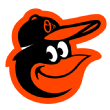 3B Ryan Mountcastle, Baltimore Orioles: Hey, look, there's a bit of good news for the Orioles in 2018! Mountcastle struggled offensively while transitioning from shortstop to third base in 2017, but there have been little signs of that in 2018, now that he's hitting .316/.366/.509 for Double-A Bowie. ZiPS sees Mountcastle peaking as a .280/.340/.470 third baseman in his prime and being league average as soon as 2020. He might advance quickly to the majors without a lot in front of him in the years to come.
3B Ryan Mountcastle, Baltimore Orioles: Hey, look, there's a bit of good news for the Orioles in 2018! Mountcastle struggled offensively while transitioning from shortstop to third base in 2017, but there have been little signs of that in 2018, now that he's hitting .316/.366/.509 for Double-A Bowie. ZiPS sees Mountcastle peaking as a .280/.340/.470 third baseman in his prime and being league average as soon as 2020. He might advance quickly to the majors without a lot in front of him in the years to come.
All-Star ETA: 2025
